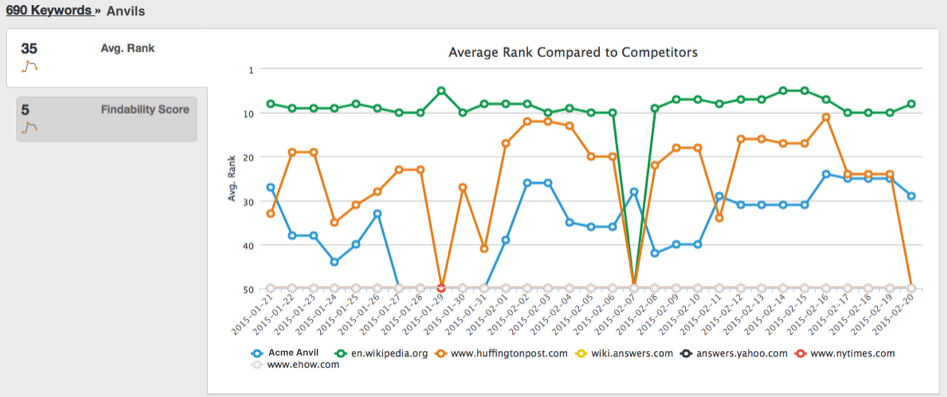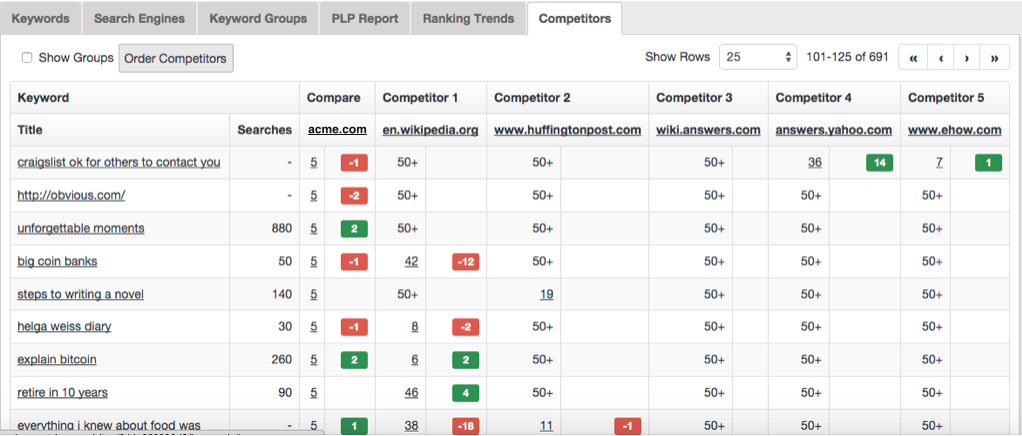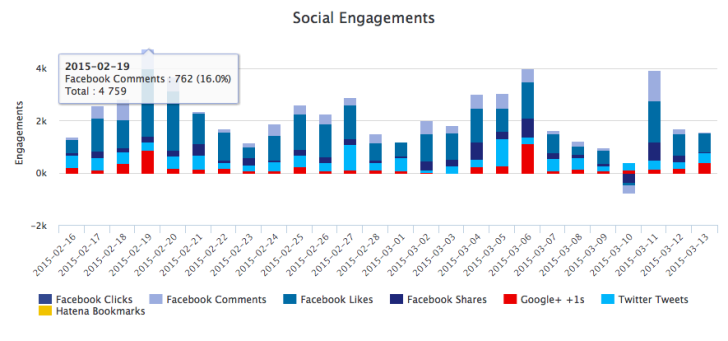As content marketing reaches a certain level of maturity, its challenges are not going away. In fact, according to the Content Marketing Institute, fewer marketers feel their efforts are effective now than a year ago. With the majority of marketers frustrated over the effectiveness, overall success, and measurability of content marketing, it’s surprising to learn that the majority of them plan to produce more content moving forward, not less.
Here are few of the common marketing challenges and goals identified by CMI:
- 70% of marketers say their content marketing efforts are not effective
- 56% of marketers not clear about what a successful content marketing program looks like
- 76% of marketers say they plan to produce more content moving forward (2016 v. 2015)
- 85% say lead generation the number one goal
- 71% of marketers use website traffic as their number one measurement
- 60% say top challenge is producing engaging content
Content marketing, by its very nature, requires a certain level of agility and ability to respond to changes in user needs and interests. Having access to, and responding to, daily search and ranking data will help marketers make better, faster decisions while improving the overall effectiveness and success of marketing campaigns.
Make Content Decisions Faster
Between the large algorithm updates; Panda, Penguin, Hummingbird, Pigeon, and the routine and sometimes unannounced “tweaks” to search engine algorithms, everyone has felt the effects on ranking performance. If you’re looking at your ranking and keyword data on a daily basis, you might notice a large dip or spike one day that self-corrects the next day. If you’re looking at your data over a 7-day period, you won’t know that you experienced a temporary change and it may seem like you’ve lost your overall ranking position.

When the majority of marketers are using website traffic as their number one measurement of content effectiveness, knowing exactly what is affecting site and keyword ranking is one way to make fast decisions about ongoing campaigns and improve overall effectiveness. Although you base your overall campaign strategies and marketing goals on search and keyword results gathered over time, there are opportunities for agile marketing decisions based on daily fluctuations as the result of specific actions.
Annotations are a great way to identify events and actions that may affect your position in the SERPs. Using annotations, track the following events to understand changes in rank:
- Major algorithm changes
- Suspected algorithm changes
- You and your competitors experience a dip on the same day
- New content release dates
- Start of a new ad campaign
- Product announcements
- Feature releases
- Company news releases
You’ll want to know exactly what is affecting your rank and how long it takes for your activities to show a positive contribution to the bottom line. As soon as you release new content, Google starts measuring it for audience engagement and you can start measuring its effectiveness to see changes in rank from the first day it appears onsite, offsite, or on social media.
Discover Competitor Changes Faster
Producing engaging content is a top challenge among a majority of marketers. Knowing what content to create requires keeping the pulse of the competition to understand what content they’re creating and what’s beating you in the SERPs. There are three types of data you’ll need to make competitive content decisions:
- Competitor content insights
- Competitor content discovery
- Competitor social share of voice
Keeping track of the competitors you know, means having insights into the exact keywords and the exact content they’re creating that threatens to take attention from your content and your brand. You’ll want to monitor competitor ranking across all the marketing channels on a daily basis. When you see a spike in engagement, take a deeper dive to discover what content is engaging audiences and gaining authority on the search engines. Armed with that information, you might want to look at your existing content to make a few changes in keyword usage or find your own, unique way to discuss the topics they’re being found for.

Besides the competitors you know, watch for content across the Internet that matches the keywords and topics you care about. Many times, competing content comes from industry publications or popular blogs. While it’s difficult to compete with a popular publication with thousands of subscribers, you might want to consider using that platform for contributed articles, or reaching out to the journalists who cover your industry with information about your brand.
More and more, social media engagement is factoring into the authority search engines attribute to specific brands. Monitor your competitor’s share of voice, as well as your own, and watch for its impact on ranking data. In the earliest days of a new content campaign, monitor social and ranking performance to gain actionable insights and quickly adjust your tactics or topics to improve overall effectiveness. If you’re not getting the engagement you had expected from any one channel, check to make sure you’re using the exact words and phrases that are trending on that particular social media channel.

When you’re not getting the engagement you want, you may have to slightly adjust your message or the way you deliver that message, depending on how your audiences are engaging on that channel. Look to see what types of content are working for your competitors and which keyword phrases are mostly used when talking about your industry niche and then make the tweaks necessary to match your content to the channel norms.
Tie Marketing Efforts to Conversions Sooner
Marketers agree, creating more conversions and attaining qualified leads is their number one goal. Meeting that goal requires tying marketing efforts to lead generation. Because content marketing is a slow-burn strategy that creates results over the long-term, it’s often difficult to attribute specific content directly to a particular conversion. However, by monitoring conversion rates daily as well as weekly or monthly, patterns begin to emerge which allow marketers to draw conclusions about the effectiveness of content and campaigns.

Monitor content by specific URLs to understand:
- Rank change (up or down)
- Number of searches for that content
- Projected monthly traffic
- Number of visits to that page
- Conversions from that page
- E-commerce dollar amount gained from that page
If you notice a sudden drop in conversion rates overall, check for website loading speed, site indexing issues, and other SEO optimizations that can attribute to overall findability. Monitoring your website traffic and conversions often will help to inform current and future content decisions by showing you how searchers are responding to your content. Identifying what’s working and what’s not will give you insight into the level of interest and trust you’re building with your audiences as well as your own site authority.
Some ideas for improving conversion rates generated by content include:
- Tie content topics to business goals
- Write for audience personas
- Discover the keywords and phrases your audiences are using.
- Create content in the mediums most consumed by your audiences.
- Target messages by channel
- Understand what kinds of information audience are looking for.
- Identify the types of content that perform best by channel.
- Provide valuable experiences
- Answer questions
- Solve problems
- Give instruction
Monitor keyword and content insights along with audience engagement metrics and social share of voice to understand where your audiences are engaging with content and know what questions they’re asking and which topics are peaking their interests.
Build a Successful Content Marketing Workflow Sooner
Marketers who have a written strategy are more effective than those with a strategy that isn’t written down, or with no content strategy at all. A simple model for a content marketing strategy looks something like this:
- Identify overall corporate objectives
- Set content marketing KPIs
- Select keyword and phrases
- Create corresponding keyword and content groups
- Identify competitors
- Determine content to create
- Medium (types of content)
- Method (distribution channels)
- Message (subject lines and headlines)
- Decide on method and frequency of measurement
Getting regular keyword, ranking, search, and social data allows you to continuously measure the results of your efforts and identify areas to optimize along the way. As you release new content keep track of:
- All organic visits versus tracked organic visits
- Measure how much traffic you’re gaining from search.
- Know how much traffic is coming from the keywords you’re currently tracking.
- Identify areas of missed opportunity.
- Findability score
- Monitor your overall visibility across major search engines based on your target locations.
- Compare your findability score to that of your competitors.
- Investigate areas where your competitors are beating you.
- Top 3 keywords
- Know what specific content is contributing to your ranking success.
- Identify target keywords that are not performing well in search.
- Make adjustments to improve content.
- Look for SEO optimization recommendations.

While you may not have the time or the resources to take a deep dive into your data everyday, you should at least review rankings and channel performance on a daily basis to monitor what’s working and what’s not and to pinpoint places that need a quick fix. Looking at daily data over a longer period will also give you insights into the daily fluctuations that naturally occur while giving you a better overall picture of your average page rank and findability without confusing a one day slump to an overall ranking trend.
Now, all you have to do is create the most engaging, authentic and trustworthy content you can based on the most up to date data you can get.

